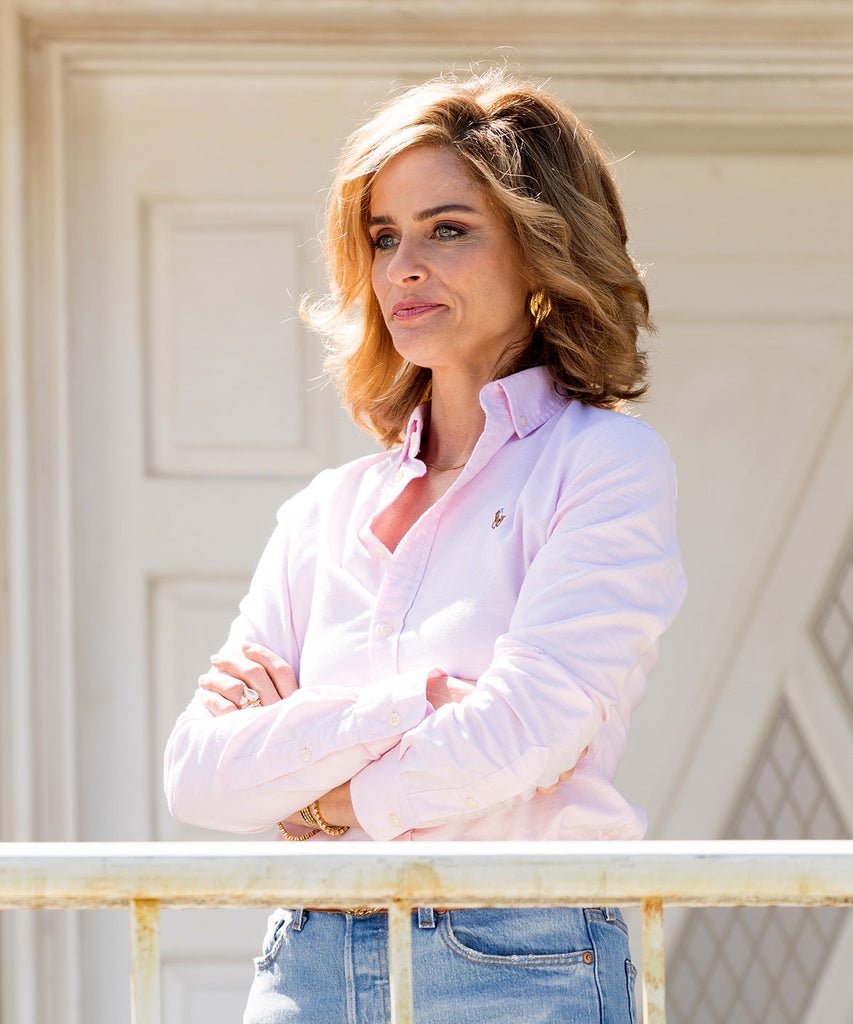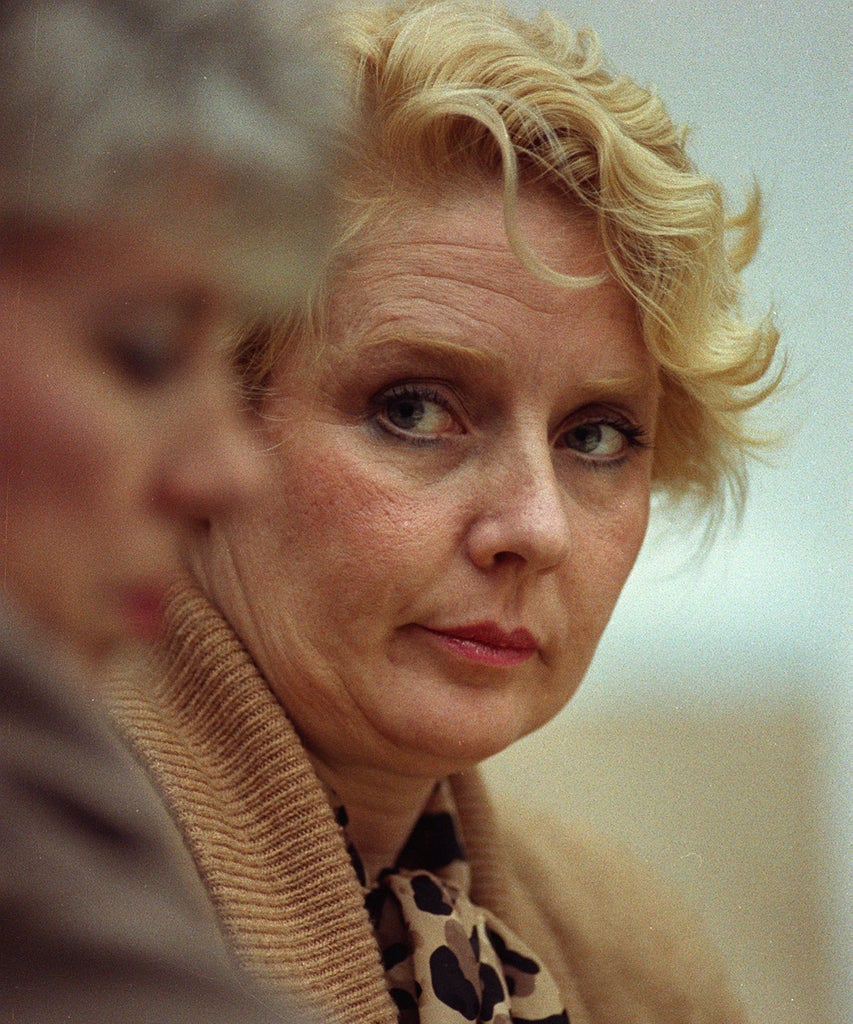
Dirty John began as a series of articles, then a podcast, then eventually became a TV series about a deceptive, abusive conman. But the true crime anthology series is shifting its focus for season two, which has just come out on Netflix in the UK: The Betty Broderick Story stars Amanda Peet as the real-life woman who, in 1991, was convicted of killing her ex-husband and his new wife following an extremely contentious divorce.
Like the first season, The Betty Broderick Story touches on the effect abuse and manipulation have on relationships. And although the “Dirty John” in season 2 is a woman, the series shines a light on how patterns of abuse can shape someone’s behaviour to the point where she could eventually snap. Series creator Alexandra Cunningham spoke to Refinery29 about why she chose Broderick’s case as the focus for season 2, and why Broderick’s case spoke to her even as a teenager.
Firstly, Who Is Betty Broderick?

On Nov. 5, 1989, the La Jolla, California housewife broke into her ex-husband’s home and shot him and his new, much-younger wife. A few years earlier, Dan Broderick, 44, had divorced Betty and taken full custody of their four children after having an affair with (and subsequently marrying) his twentysomething legal assistant. Their divorce was so contentious that it became known as San Diego’s worst-ever divorce case.
Betty was tried twice (the first time was declared a mistrial thanks to a hung jury) and ultimately convicted of their murders in 1991, and was sentenced to 32 years to life in prison (where she still lives, having been denied her most recent request for parole in 2017).
The news made national headlines because, wrote People at the time, “she claimed she was ‘a woman scorned,’ divorced three years earlier by her husband, a wealthy attorney, who she said battered her emotionally with relentless legal actions. The prosecution, however, argued that Betty was an obsessive shrew who had terrorised Dan and Linda for years, resulting in his many Legal moves.”
Broderick was interviewed by Oprah Winfrey shortly after her conviction, and a two-part made-for-TV movie starring Meredith Baxter and Stephen Collins earned Baxter an Emmy nomination.
Why Betty Broderick’s Story?
Although the title Dirty John refers to “Dirty John” Meehan, whose deception of Orange County, California interior designer Debra Newell was the focus of season 1, the series was ordered for a second season before it even premiered. Creator Cunningham said at the time that she planned to feature a female “Dirty John” at the centre, and told Refinery29 in 2020 that she chose Broderick because it’s a case that has stuck with her since she was a teen.
“I have a had a lot of friends whose parents have gotten divorced. We’re from sort of the same socioeconomic opportunities, and to imagine one of my mom’s friends just losing her mind and killing her ex-husband and his new wife was just sort of tabloidy fun. But I didn’t have any life experience to try to put myself in that place. My parents were not divorced. It was really just a thing that could have been in the New York Post — that kind of coverage,” she says.
“I felt like I needed to do it now because I had sort of become Betty without the murder.”
Alexandra Cunningham, Dirty John: The Betty Broderick Story creator
But later, revisiting the case via reporter Bella Stumbo’s book Until the Twelfth of Never — a seminal true crime novel that Cunningham believes should be up there with the greats like In Cold Blood and The Stranger Beside Me — she realised she could understand Broderick’s mindset a lot more.

“I realised that I’m not a teenager anymore. I’m a woman now in her 40s with kids, and with the same sort of opportunities as Betty had. I could put myself into her shoes and feel that panic and desperation — the idea of being abandoned, being lied to, being alone, thinking about what would happen if I found out I had been lied to for years. What would that do to my sense of reality and trust and belief that I was sane?” she says.
That realisation changed everything.
“I also sometimes worry about what I’ll do with my anger and what would happen if I just let it fly. Could I put it back in the bottle if I did that? And the answer is probably no, so the story acquired a lot of emotional resonance over the decades, and that’s why I felt like I needed to do it now because I had sort of become Betty without the murder.”
Is Betty Guilty?
Broderick was convicted for both murders, and is still imprisoned for the crimes. But her trial brought up plenty of societal issues related to emotional abuse, societal standing, gaslighting, and the rights of women — particularly homemakers — when it comes to divorce.
Think of Broderick’s situation: “She got married in 1969. She was raised to be a wife and mother. She could have done a lot of things with her life,” Cunningham says. “Not that other people can’t, but she graduated college early. She could have been a headmaster of a school or a president of a college, but she was raised in the ’50s and ’60s to be a wife and mother. She helped Dan through medical school and law school and that that was her contribution.”
Times have changed since the Brodericks divorced, since Betty was tried for her crimes, and since her story was first told in the Meredith Baxter TV movie.
“Since it happened, and also since the story’s been told culturally, we’ve learned a lot about the situation she was in,” Cunningham said. “That doesn’t necessarily mean she needs to be forgiven or not punished, but that she can be understood in a more holistic way. At the time that Betty went to trial, the conventional societal wisdom about domestic abuse was black eyes. If there was no evidence of that, then there was no domestic abuse and there was no such thing as coercive control.”

What Does Betty Broderick Think Of The Dirty John Series?
Well, Cunningham doesn’t exactly know.
While Cunningham didn’t consult Newell directly when she wrote season one of Dirty John, the family was involved in the Los Angeles Times investigation and podcast. Many of the actors — especially star and executive producer Connie Britton — spoke with the real-life people on which their characters were based. For season 2, there was no communication between the series and the real-life woman, particularly since there were so many public sources from which to draw.
Though Cunningham optioned the rights to Stumbo’s The Twelfth of Never and took plenty of information from it, the series is not directly based on that book. She also used Los Angeles Times reporting about the trial (the newspaper is a partner on the show, since season one was based on the Times series and podcast by reporter Christopher Goffard), and from transcripts of the trial.
“I had a researcher this year and I sent him to the San Diego courthouse with a scanning truck and a check and said, ‘I need all the pages of the transcripts from the trials.’ And then funnily enough, he called me and said when he walked in, they said, ‘We were about to shred them.’ Because it had been 30 years and I think they shred things after 30 years,” she says. “When he called me and told me that I had to, like, lie down on the couch in my office because I never would’ve thought we made it by a week.”
Just like in season 1, though, Cunningham made sure to be as respectful as possible to everyone involved in the story.
“I tried my best to be as respectful and sensitive and not portray anything that I felt was stepping over the line,” she said. “But this year we did not interact, unlike last year.”
Dirty John: The Betty Broderick Story is on UK Netflix now
Like what you see? How about some more R29 goodness, right here?
‘Dirty John: Betty’ Episode 2 Recap